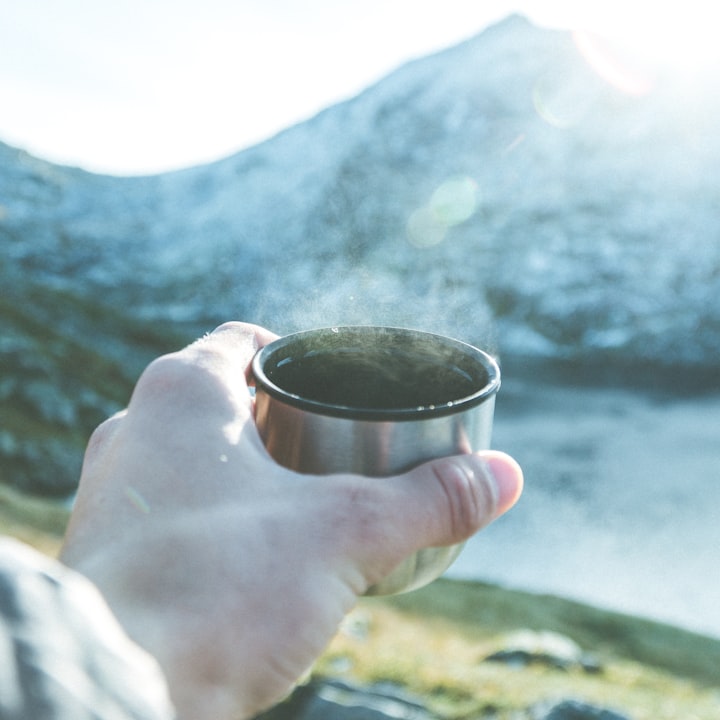
I was staring into my porcelain toilet bowl, reeling with nausea from a migraine, when I made myself a promise. The headache had forced me to camp out in the bathroom. Ghostly pale and shaky, I lay on a fuzzy black rug while conducting internal negotiations.
My migraines had started happening on a pattern, occurring every Saturday- the day of rest. Coincidently, I’m typing this on a Saturday, and I'm reminded of my new affliction by a dull ache behind my eyes.
The only relief I found was sleeping, often involuntary. I’d try to continue business as usual, but I’d find it impossible to move or even open my eyes without feeling a sharp, stabbing pain. However, If I laid still enough, I could fall into a blissful painless sleep, and I would stay that way until the following morning, where I would emerge a new, rested. After my miraculous recovery, I’d immediately hop back into my routine of being pressure-cooked by life until next Saturday, when the dance would repeat.
I promised myself that I would stop and rest before my body demanded it. As people, we all move with a forward inertia. We are trying to progress, accomplish, collect, conquer every second of every day. It’s the same reason why I’m typing this article when I have a headache I know is caused by overexertion. I don’t know how to stop.
Tools like meditation and journaling take the edge off, but they don't entirely rejuvenate me. I need drastic intervention, I’m a creature of habit, and I’m getting more sedentary in my workaholic lifestyle by the second.
How can I press pause amid all my responsibilities and the restraints of money? Especially when the norm is to work hard, develop the mental callouses, and overcome any adversity or suffering.
Aside from the unspoken pressure, there are some things I cannot escape from. Rent is due every month; I have to eat, shower, and sleep. I feel like a hamster on a never-ending wheel where I won’t get the cheese, just close enough to keep trying.
Since I can’t just stop, resign from society, and build a tiny house in the woods, I’ve decided I’m going to take a sabbatical this year.
A sabbatical is an extended period for travel, rest, and study, away from one’s regular job. The key to a sabbatical is to honor its origins. The word sabbatical stems from its root word sabbath, meaning rest. But if you’re anything like me, you’ve become almost addicted to the pressure cooker quality of life. Without it, I wouldn’t know how to fill my days satisfyingly. I have no way of deriving a sense of accomplishment if not through work.
Given two weeks of “vacation,” I spend most of it in analysis paralysis, trying to make the most of the little time I give myself to reset. I wake up in the morning at the same time my alarm usually wakes me, and then I follow my mom's way of vacationing. Get up and cram everything you can into one day, so when you leave, you’re exhausted and experienced everything halfway (love you, mom).
I attempt an unwinnable game of arranging potential activities versus the time they take and how happy they’ll make me. As if I can measure happiness with a ruler. I end up feeling exhausted from the mere thinking about what to do and usually end up frustrated enough to just wing it.
I need to allow myself time to shed the layers of societal expectations and pressure from my shoulders. At this point, the emotional burden of trying to be productive kills my productivity. Plus, I never stayed anywhere long enough to feel like I genuinely understood the place and explored it thoroughly. Just when my shoulders leave beneath my ears, I’m rushing off back home.
So, I’m planning on taking a one-month trip to Buenos Aires, Argentina. A hard reset to relax, and learn about myself without a purpose in mind at the end of the tunnel. I need to live in the moment, whatever that even means. I'm sure the first week will be spent confused, detached, and feverishly checking email. But I hope that the drastic change of environment and a culture that encourages more rest will help me find some balance.
Rules for Rest

No Social Media
I've morphed into my grandma and hate social media in general. But it's necessary for my job and one of the only methods of building a sustainable audience. The point of this trip is to disconnect and relax. I will be making content to release automatically while I'm away.
No Email
Email is the main gateway to my attention. I used to check it first thing in the morning and then five times by lunch. While on vacation, my goal is to not check it more than once a week, but ideally never. The plan is to let fires start and not be the one to douse them.
Mood Follows Action
While on this trip, I don't want to let small things derail my calm. I also don't want to wait until I feel good enough, or until I've calmed down from the woman who was rude to me at breakfast. I have to be intentional and take action to adjust my mood. Suppose I notice myself slipping into a negative headspace. I can't think myself out of sadness or anger, I have to take action, and my mood will follow.
Hard Reset
“Every person needs to take one day away. A day in which one consciously separates the past from the future.
Each person deserves a day away in which no problems are confronted, no solutions searched for. Each of us needs to withdraw from the cares which will not withdraw from us.”
-Maya Angelou
The point of this trip is to bring back the vibrancy to life. Things have gotten so stagnant and…predictable. I want to use this time to do something that feeds my soul.
I want to savor the day instead of sprinting through it to meet arbitrary productivity goals. It’s long overdue that I stop trying to move forward and appreciate where I am. I plan on doing this with copious amounts of wine, dancing, good food, and exploration both internal and external.
I’ve always wanted to learn Spanish. I don’t see a better way to learn than embedding myself in a place where Spanish is the first language. I’ll get conversational practice daily, and it won’t feel like a chore, similar to being hunched over my laptop on Duo Lingo. In my regular routine, I find myself passing up the chance to learn a new skill because I can never find the time. Life didn’t use to go so fast, and I’m ready to find a way to slow down again.
La Ventana Tango House
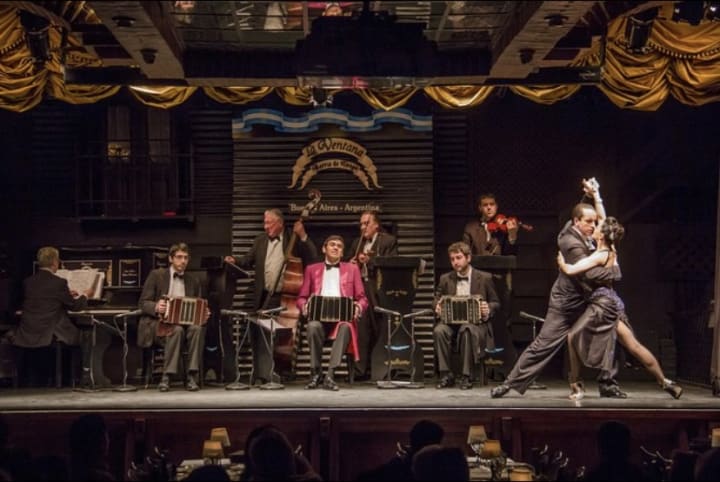
Buenos Aires is the birthplace of tango. An intricate and exciting form of dance that is rich in culture. I would love to learn to tango with my girlfriend. I have terrible rhythm, and I’ll probably stomp on her toes, but I think it would bring us closer and be a romantic experience that strengthens our trust.
After our tango lesson, we have the option to go wine tasting, have dinner, and watch a show featuring world-class dancers at the La Ventana Tango House.
Recoleta Cemetery

In Portland, I found my love for cemeteries. I spent a lot of time studying gravestones and walking throughout the solemn parks. Something about seeing people who lived in the past keeps me in tune with my mortality and makes me grateful for my slice of life in the period I’m experiencing it in.
Buenos Aires is home to the Recoleta Cemetery, one of the most beautiful and history-rich burial places. The cemetery gets its name from the Rollect Monks, who owned the land before it became the cities first cemetery in 1822.
Almost every tomb has a story, such as Rufina Cambaceres, buried in the early 1900s. A few days after her burial, local workers claimed to have heard screams coming from the area, and when her coffin was reopened, it was discovered that Rufina Cambaceres had scratches on her face and along the inside of her coffin. Upon investigation, she had merely been in a coma. Her tomb is lined with artwork from a grieving family.
Ecological Reserve in Puerto Madero
“Rest is not idleness, and to lie sometimes on the grass under trees on a summer's day, listening to the murmur of the water, or watching the clouds float across the sky, is by no means a waste of time.”
- John Lubbock

Just outside of the busyness of downtown Buenos Aires exists the serene Costanera Sur Ecological Reserve. Within the colossal park lives more than 500 species of vegetation, 2,000 species of lizards, turtles, and coypus, and 340 species of bird.
My girlfriend got me into bird watching. I never had the patience to sit still enough to allow the birds to feel comfortable. She knows their names and their mating rituals. I’ve followed her through many a forest, finding peace in staying still, just for the sake of observing. In the past, I’ve made hikes about reaching the end of the trail rather than enjoying what’s along the way.
Mate and Medialunas
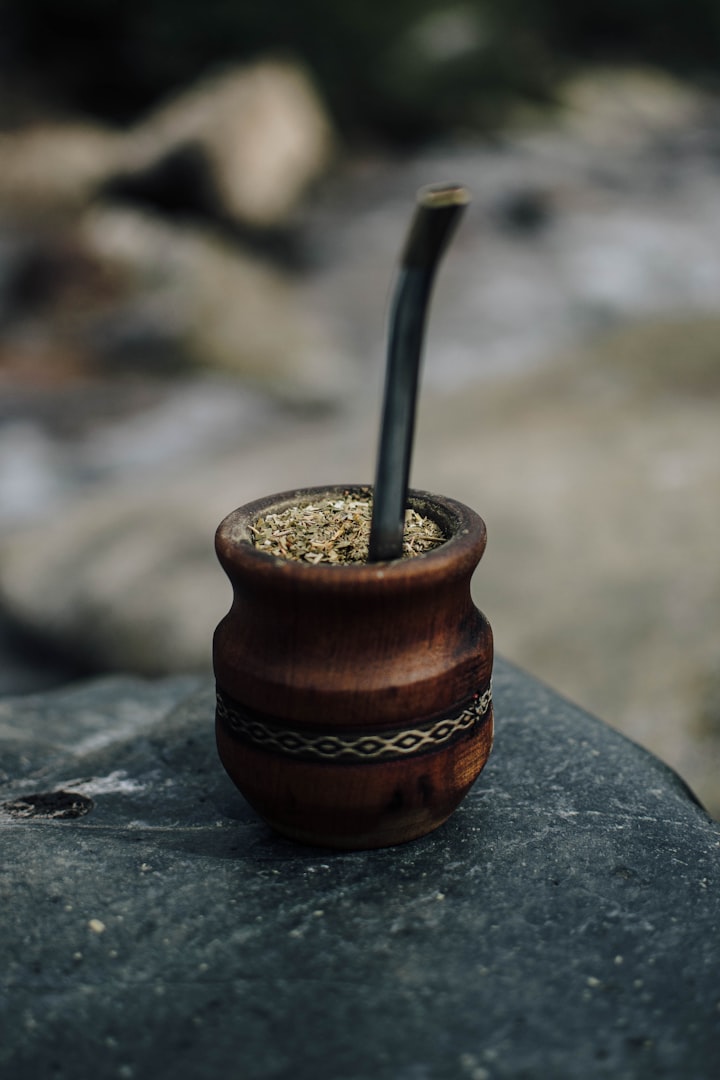
While away, I’ll be swapping my breakfast burrito and coffee for croissants and tea. In Argentina, a light breakfast of a croissant (medialunas) and yerba mate tea is customary.
Japanese Garden
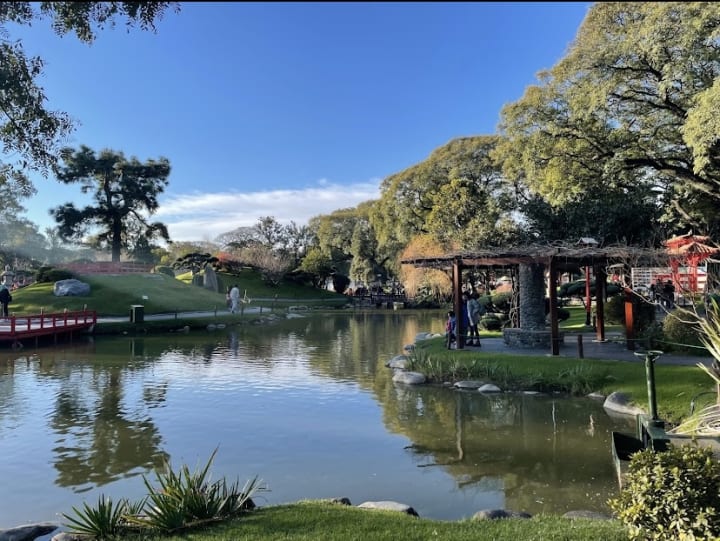
The Japanese Gardens are proclaimed as one of the most relaxing places in Buenos Aires. Located beside Tres de Febrero park, the site was inaugurated in 1967 to coincide with a visit by the emperor of Japan, Akihito, and his wife Michiko.
The garden was created to promote balance and harmony. Featuring a wide variety of plants, a pond with koi, an island with bridges, and sculptures designed with Japanese culture in mind.
Walking has been one of my creative secrets and key stress relievers for years now. I can’t wait to visit the plant nursery on-site and spend hours strolling in the sun.
Parting Words
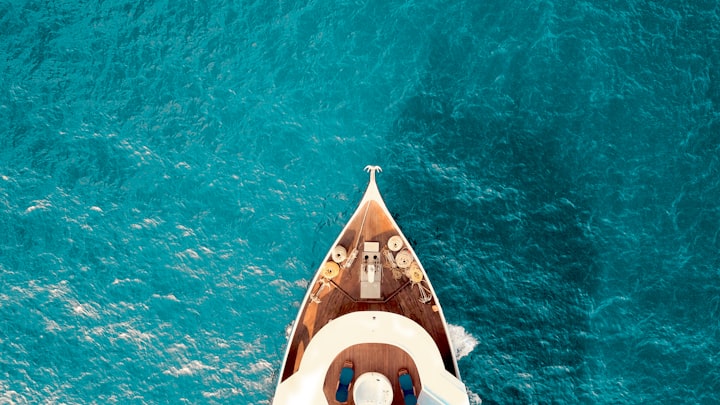
There’s a well-known parable about a small Mexican coastal town where a fisherman and an American businessman meet during his vacation. The businessman asks the fisherman how long it took him to catch the bucket of fish by his side, and the fisherman replies, “only a little while.”
The businessman asks why he doesn’t stay out longer, what does he do with the rest of his time?
The fishermen replied, “I sleep late, fish a little, play with my children, take siesta with my wife, stroll into the village each evening where I sip wine and play guitar with my amigos: I have a full and busy life, señor.”
To which the banker advises,
“I am an Ivy League MBA, and I could help you. You could spend more time fishing and, with the proceeds, buy a bigger boat, and with the proceeds from the bigger boat, you could buy several boats until eventually, you would have a whole fleet of fishing boats. Instead of selling your catch to the middleman, you could sell directly to the processor, eventually opening your own cannery. You could control the product, processing, and distribution.”
Then he added: “Of course, you would need to leave this small coastal fishing village and move to Mexico City, where you would run your growing enterprise.”
The Mexican fisherman asked, “But señor, how long will this all take?”
To which the American replied: “15–20 years.”
“But what then?” asked the Mexican.
The American laughed and said, “That’s the best part. When the time is right, you would announce an IPO and sell your company stock to the public and become very rich. You could make millions.”
“Millions, señor? Then what?”
To which the investment banker replied:
“Then you would retire. You could move to a small coastal fishing village where you would sleep late, fish a little, play with your kids, take a siesta with your wife, stroll to the village in the evenings where you could sip wine and play your guitar with your amigos.”
Collectively, the time reserved for rest is dwindling smaller and smaller. Work doesn’t stay at the office or during the weekdays; now, it stretches to all hours of the day. Whether physically doing activities or merely thinking about the day ahead tomorrow.
Our other ambitions are pushed back until we make a certain amount. But sometimes, that amount is never made, and we could do the things we dream about today instead of waiting. Your rest resolution doesn’t have to be as extreme as pausing for a month, uprooting your life, and learning tango. It could be as simple as carving some extra quiet time out in the mornings. What’s important, is that we widen the ratio of rest compared to work.
I give the other 11 months out of the year to my work happily. I love what I do, and I often don’t question the sacrifice it takes to succeed. One month to rest and recharge will only help me hone my craft and give me experiences to color my stories.
———————————————————————
Hi!
Thank you so much for reading! Likes, subscribes, pledges are all greatly appreciated :).
Socials: @awriterwhodraws
Creative? There’s a place for you on Vocal, join Vocal+.
Talk soon,
RJ.
About the Creator
RJ
Find me on Instagram at @awriterwhodraws


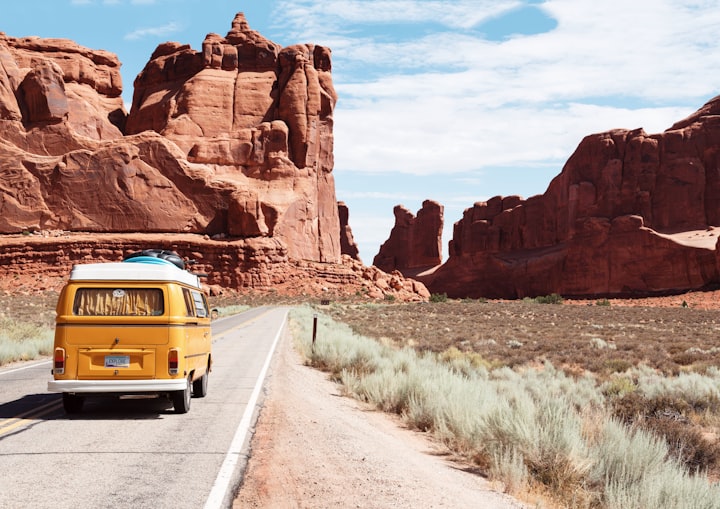

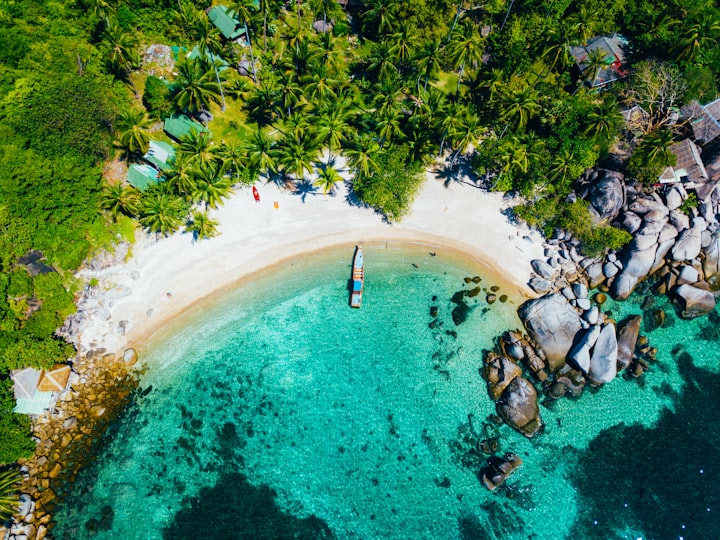

Comments
There are no comments for this story
Be the first to respond and start the conversation.